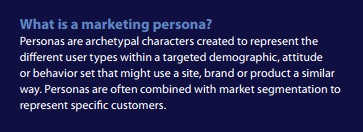Customer Journey Mapping
Are you tired of guessing what motivates your customers, what content would interest them or which areas to invest in moving forward? Then, you might be missing the most fun and crucial part of your inbound marketing strategy: Customer Journey Mapping.
What exactly is a customer journey map? It is basically one of the best storytelling marketing tools as it tells the story of a customer’s lifecycle by mapping out the stages of the cycle from the first contact to the engagement of a long-term relationship. It sounds like a love story, doesn’t it? Call me a romantic but I like to think of the customer journey as a love story between a customer and a brand.
Customer journey mapping helps us visualize every touchpoint in the purchasing cycle and learn from those experiences. Speaking of visualizing, here is a video from Kerry Bodine, a Customer Experience Consultant & co-author of the book Outside In, to help us understand how to create a customer journey map and why it is beneficial.
Why?
The customer journey can mean various things from various perspectives. However, from the content management perspective, creating a holistic content experience is vitally tied with understanding your customers’ needs. Therefore, if you would like to deliver the right content to the right person at the right time, you “must” document your customer’s journey. Keep in mind that 56% of U.S. email users unsubscribe from a business or nonprofit email subscription because of content that is no longer relevant, according to Chadwick Martin Bailey. Moreover, Gartner predicts that 89% of companies will compete mainly by customer experience.
The Stages of a Customer Journey
Before taking a walk through all the stages, I would like to briefly describe a marketing persona as it is a fundamental step for moving forward. It’s a love story, remember? Every person likes a certain type with their prospective partner in mind.

Here is a great resource from the Content Marketing Institute to help you get started. Once you have built your personas, you are ready to dive into mapping each persona’s unique journey.
Now that you’ve uncovered your business personas, it is time to figure out what phases they are going through, what their goals are, and what content you could use to help them achieve these goals.
There is no one single way to create your Customer Journey Map, so you can divide the process into as many stages applicable to your business. I will break it down into the three main stages to keep it short and sweet:
#1 AWARENESS STAGE
As the name implies, prospects are not looking for a solution in this stage, yet they have just become aware of the fact that there is a problem. This is the first interaction and there is no guarantee of love at first sight. The goal for this stage is finding out the best way to engage. You can play this game like a chess grandmaster! Think ahead of what your customers might be looking for. As they are experiencing and acknowledging the symptoms of a need or an issue, it would definitely be a good time to help them understand and identify their problem/situation. Basically, you should educate them on their problems.
The relevant type of content: Informative, third party and vendor neutral content such as eBooks, White Papers, Analyst Reports, Research Reports, Expert Content, Blogs, Case Studies, Newsletter
The keywords: Issue, problem, improve, optimize, troubleshoot, tips, how, opportunity
#2 CONSIDERATION STAGE
Prospects have clearly defined their problems or needs and it is time to speak to solutions, but as a vendor you need to be careful not to push your brand. Comparison and deeper research are substantially involved in this stage.
The relevant type of content: Expert guides, webcasts, podcasts, video, live interactions, comparison white paper, testimonials, case studies, product demos, feature lists of products, contact details
The keywords: Solution, software, tool, service, vendor, supplier, provider, option, method, approach
#3 DECISION STAGE
Prospects have defined the solution, so it is time to get official and show why you’re the best! Their goal is to make an informed decision leading to a peace of mind agreement. This stage is critical for developing a relationship with your customer.
The relevant type of content: Product literature, trial download, technical supporting documents, customized demo, case studies, vendor compassions, pricing specifics, contract specifics, implementation steps guide, sales/support FAQs
The keywords: Test, benchmark, versus, pros and cons, review
Every story has a unique ending, so after nurturing your new prospect and converting them into a buyer, you should cultivate strong customer loyalty with your brand. There is nothing more effective than referral marketing when it comes to customer acquisition.
Let’s wrap this party up!
Don’t forget that effective content is about your customers’ needs. The more specific you can be while determining the needs and goals at every stage, the more use you will get out of your customer journey map.
Mapping your customer journey is just a kick-starter to finding your company’s strengths & weaknesses. Moving forward, there are many more tactics and strategies for vendors to cut through the noise and stand out from the literally hundreds of digital solutions and providers. If you’re interested in hearing more from our CMS Analysts, tune into the upcoming CMS-Connected Show on February 26th with Stephen Saber, Scott Liewehr, and special guests Jim Panagas and Jim Lundy as they discuss how vendors need to sell their CMS technology successfully to get noticed in today's bloated marketplace.
Good luck with your mapping, and let us know how it goes in the comments section below.

Venus Tamturk
Venus is the Media Reporter for CMS-Connected, with one of her tasks to write thorough articles by creating the most up-to-date and engaging content using B2B digital marketing. She enjoys increasing brand equity and conversion through the strategic use of social media channels and integrated media marketing plans.